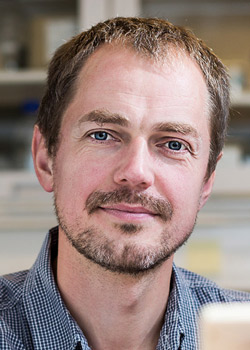Improving HIV Latency-Reversing Strategies
Researchers seek to refine the “kill” in a “shock and kill” strategy
By Jeffrey Laurence, M.D.

Research question
Eliminating persistently HIV-infected reservoir cells while leaving uninfected cells intact is the ultimate goal of HIV cure efforts and has eluded years of research. Development of novel strategies is required. A recent study aimed to design a drug that would be toxic only in cells with HIV protease, in other words, infected cells. The function of HIV protease is to cut some of HIV’s other proteins at a site called Phe-Pro.
The researchers hypothesized that they could take advantage of this function by making a toxin that is activated only when HIV protease cuts it. Such a drug would be a valuable partner along with a latency-reversing agent (LRA) in eliminating the HIV reservoir. At present, “shock and kill” strategies, by which an LRA is used to activate latently infected cells, rely on the immune system to kill those infected cells. A “medicinal kill agent” turned on by the virus itself should prove to be a great assist.
Findings
The investigators, led by amfAR grantee Dr. Alexander Zelikin, started with MMAF, which is FDA-approved as part of a treatment for multiple myeloma, a cancer of the blood and bone marrow. It is highly toxic to cells as it interferes with tubulin, a protein critical to many normal cell functions. The research team engineered a series of derivatives containing the Phe-Pro target site and added these to latently HIV-infected T cells in the test tube. Two of the derivatives, MF-6 and MF-7, increased infected cell killing more than tenfold when combined with the LRAs SAHA or TNF-α. Of interest—and contrary to their hypothesis—an active HIV protease was not required for functioning of these drugs, and the HIV protease inhibitor saquinavir had no impact on their efficacy. Instead, their cell killing function appeared related to their ability to simultaneously bind HIV protease and tubulin.
Impact
The authors conclude that their design of MMAF-derived drugs together with LRAs might prove to be a potent “pathogen-activated ART” strategy for elimination of HIV reservoirs.
amfAR’s role
amfAR was a funder of this research.
Original article
doi:10.1002/adtp.202200113
Dr. Laurence is amfAR’s senior scientific consultant.
Share This:
